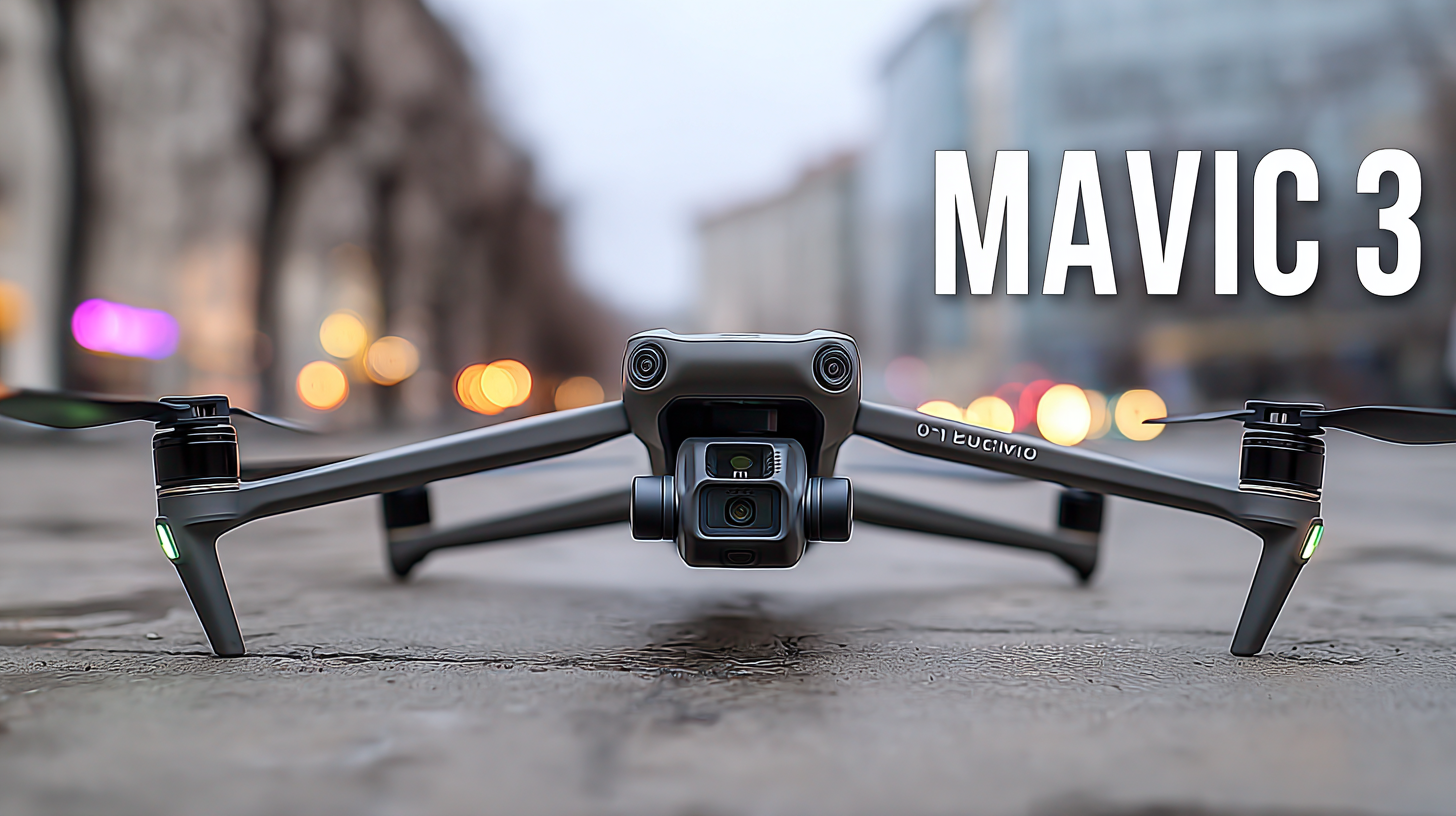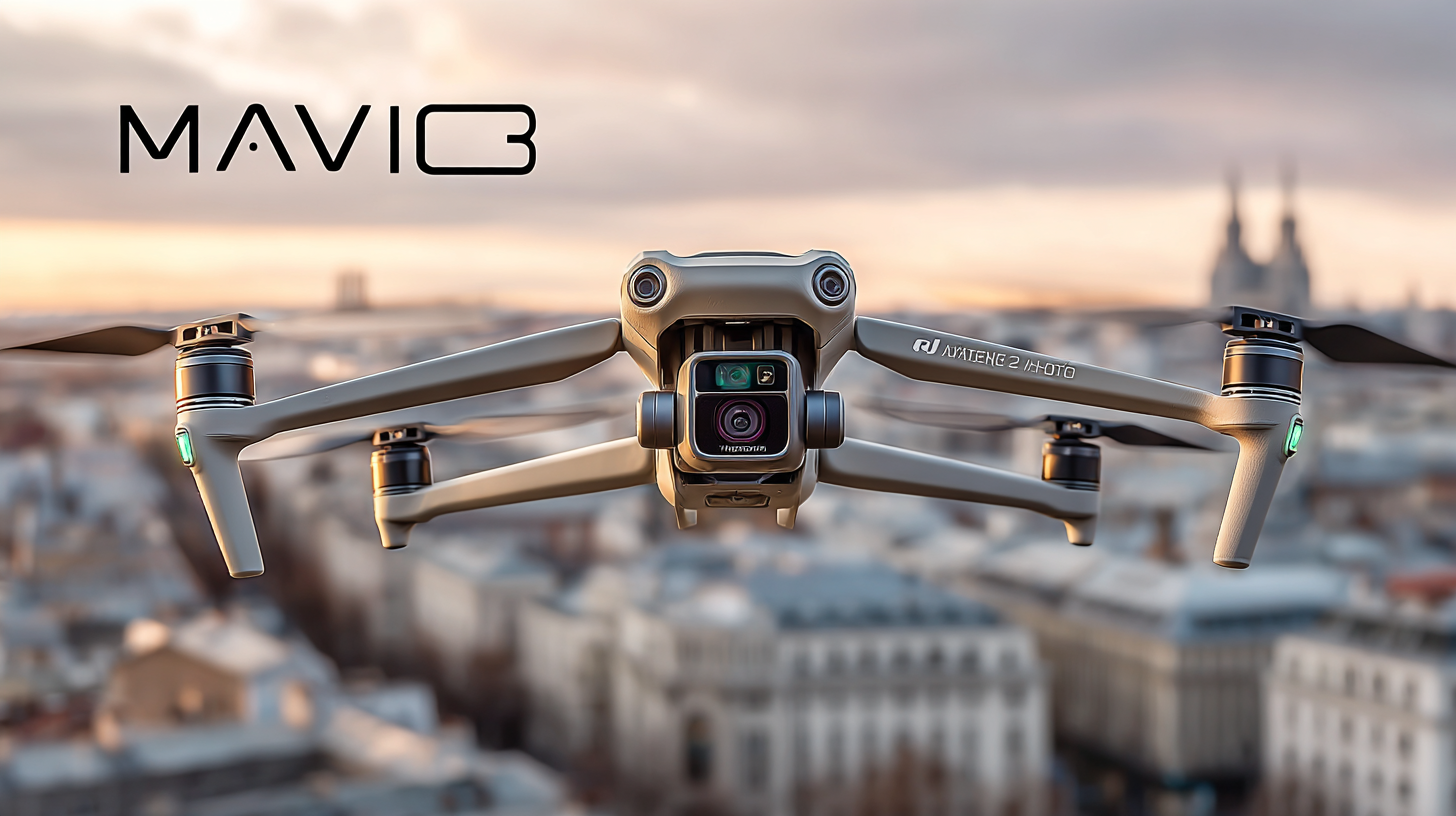Exploring Top Alternatives to the Best Dji Mavic 3 for Aerial Photography Enthusiasts
As aerial photography continues to gain momentum, enthusiasts and professionals alike are increasingly looking beyond the renowned Dji Mavic 3 for their imaging needs. With an impressive global drone market projected to reach $42.8 billion by 2025, according to industry reports, the demand for versatile and high-performance drones has never been higher.
While the Dji Mavic 3 sets a high standard with its advanced imaging capabilities and robust features, various alternatives are emerging to cater to the diverse preferences and budget constraints of users. These alternatives not only seek to bridge the gap in performance but also offer unique functionalities that could better serve particular aesthetic or operational needs in aerial photography.
In this blog, we will explore some of the top contenders and how they compare to the beloved Dji Mavic 3, providing aerial photographers with the insights needed to make informed decisions.
Identifying the Best Drone Alternatives for Aerial Photography
When it comes to aerial photography, the
DJI Mavic 3 is often heralded as a top choice. However,
for enthusiasts seeking alternatives that offer excellent performance
and unique features, there are several impressive drones to consider.
One of the leading contenders is the
Autel Robotics Evo Lite+. With its
impressive camera capabilities, including a 50MP sensor
and 6K video recording, it provides stunning imagery
and flexibility in dynamic environments. The compact design and
extended flight time make it a reliable
choice for photographers on the go.
Another noteworthy alternative is the
Skydio 2, which is renowned for its
advanced autonomous flying technology. This drone excels in obstacle avoidance and
tracking capabilities, allowing photographers to capture stunning shots effortlessly,
even in complex environments. With a 12MP camera that
shoots 4K video, the Skydio 2 supports a wide
range of shooting styles, making it an excellent pick for those looking to
elevate their aerial photography without the steep learning curve often associated
with traditional drones.
These alternatives not only match but sometimes
exceed the offerings of the Mavic 3, providing aerial photography enthusiasts with
diverse options to explore.
Key Features to Consider When Choosing a Drone for Photography
When selecting a drone for aerial photography, enthusiasts should consider several key features that impact both image quality and user experience. One of the primary aspects is the camera resolution; a study by DroneDJ highlighted that drones with at least 20 MP sensors, such as the DJI Mavic Air 2, can significantly enhance image clarity and detail, making them ideal for professional photography. Additionally, the ability to shoot in 4K at 60 frames per second allows for capturing smooth video footage, which is crucial for cinematic projects.
Another vital feature is the flight time, which directly influences how long aerial photographers can capture the perfect shot. According to a market analysis by ResearchAndMarkets, the average flight time among top-performing drones is around 30 minutes. Drones like the Autel Robotics EVO Lite provide impressive battery longevity without sacrificing performance, giving photographers ample time to explore and compose their shots creatively. Lastly, the drone's stability and ease of use, especially in windy conditions, are paramount. Models equipped with advanced stabilization technologies, such as gimbals, ensure steady shots, making them preferable for aerial enthusiasts looking to elevate their photography game.

Top Brands to Explore Beyond the DJI Mavic 3
 When it comes to aerial photography, the DJI Mavic 3 is often hailed as one of the best drones on the market. However, several brands offer competitive alternatives that cater to different preferences and budgets. Companies such as Autel Robotics, Skydio, and Parrot have emerged as noteworthy contenders in the aerial photography space. According to a recent industry report by Drone Industry Insights, the global drone market is expected to reach $41.3 billion by 2026, highlighting the increasing investment and innovation in this sector.
When it comes to aerial photography, the DJI Mavic 3 is often hailed as one of the best drones on the market. However, several brands offer competitive alternatives that cater to different preferences and budgets. Companies such as Autel Robotics, Skydio, and Parrot have emerged as noteworthy contenders in the aerial photography space. According to a recent industry report by Drone Industry Insights, the global drone market is expected to reach $41.3 billion by 2026, highlighting the increasing investment and innovation in this sector.
Autel's Evo Lite series, for example, provides impressive camera capabilities with a 1-inch CMOS sensor and can shoot 50 MP images, making it an excellent option for photography enthusiasts. Skydio, known for its advanced obstacle avoidance technology, offers the Skydio 2, which excels in capturing dynamic shots with its autonomous flying capabilities. Parrot's Anafi USA also stands out, equipped with thermal imaging and 32x zoom, making it a versatile tool for professionals in various fields, including inspection and mapping.
Tip: When choosing a drone, consider factors such as camera quality, flight time, and ease of use. It's essential to assess how these elements align with your specific aerial photography needs. Another useful tip is to familiarize yourself with local regulations regarding drone flying to ensure compliance and safety during your shoots.
Comparing Performance: Drones for Various Aerial Photography Needs
When it comes to aerial photography, the DJI Mavic 3 has set a high standard, boasting impressive features like a 20MP camera and 4/3 CMOS sensor. However, for those exploring alternatives, it's essential to consider various options tailored to specific photography needs. Drones such as the Autel EVO Lite+ offer a remarkable 50MP camera and impressive low-light capabilities, making it a desirable choice for capturing nighttime cityscapes. Additionally, the Skydio 2 stands out with its advanced obstacle avoidance technology, ensuring safety and smooth flight in complex environments.
For enthusiasts focused on budget-conscious choices, the DJI Mini 2 provides substantial value with a 12MP camera and 4K video capabilities at a fraction of the cost. According to a recent industry analysis by Drone Industry Insights, the demand for drones under $500 has surged by 30% this year, indicating that more photographers are searching for affordable yet effective solutions for their aerial needs.
**Tips:** When selecting a drone, consider the weight and portability if you plan to hike to shooting locations. Additionally, look for models with robust battery life; drones with 30-40 minutes of flight time provide more opportunities to capture the perfect shot without frequent interruptions.
Exploring Top Alternatives to the Best Dji Mavic 3 for Aerial Photography Enthusiasts
| Drone Model |
Camera Resolution |
Max Flight Time |
Maximum Range |
Weight |
Price |
| Drone A |
4K (3840 x 2160) |
30 minutes |
10 km |
800 g |
$799 |
| Drone B |
1080p (1920 x 1080) |
25 minutes |
5 km |
600 g |
$499 |
| Drone C |
6K (6144 x 3160) |
35 minutes |
12 km |
900 g |
$1299 |
| Drone D |
4K (3840 x 2160) |
34 minutes |
8 km |
850 g |
$899 |
Tips for Working with Drone Suppliers for Quality Equipment
When venturing into the world of aerial photography, choosing the right drone supplier can significantly affect the quality of your equipment and, ultimately, your photography results. A recent report from Grand View Research estimates that the global drone market will reach $43 billion by 2024, highlighting the increasing demand for high-quality aerial photography drones. This growth is driven by advancements in technology and the rising popularity of drone photography among enthusiasts and professionals alike.
**Tip 1:** Research potential suppliers thoroughly. Look for reviews, ratings, and testimonials from other users to ensure that the supplier is reputable and offers high-quality products. Remember, a well-reviewed supplier is more likely to provide reliable equipment that meets your needs.
When engaging with drone suppliers, don’t hesitate to ask questions about their products. Many companies are eager to assist customers in making informed choices. According to a 2022 survey by Statista, 70% of drone users reported that they experienced great satisfaction from having comprehensive support during the purchasing process.
**Tip 2:** Inquire about warranty and maintenance support. A good supplier will offer warranties on their products and provide options for maintenance and repair, ensuring that your investment is protected over time.
Comparison of Aerial Photography Drones